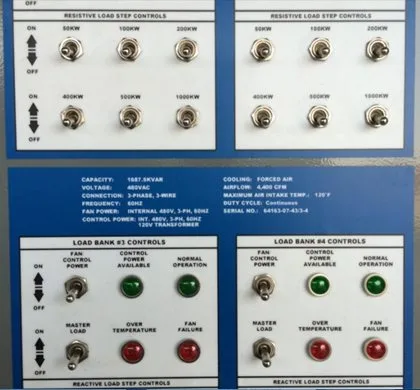Overview of Load Bank Testing
Most generator manufacturers load test generators as a part of the manufacturing process. Shipping, installation, and installation design (including paralleling of emergency generators) can introduce unplanned machinery issues. To ensure a generator provides power when utility power is lost, load testing is recommended.
When testing an emergency generator configuration, the engine, alternator, and generator control systems are evaluated.
Load bank testers can replace a facility’s load, creating an electrical load for the generator. These devices simulate the load for the generator, with two main types of systems available: resistive and reactive load bank testers.

Resistive Load Bank Testing
Resistive load bank testers are the most common type. The load is created by converting electrical energy to heat using high-power resistors (grid resistor configuration). This simulates loads such as:
- Lighting
- Incandescent light bulbs
- Heating elements (e.g., space heaters or hot plates)
The load bank tester connects directly to the generator output. The operator increases the resistive load by energizing load step switches until the prime mover is at capacity. Generator systems tested include:
- Enclosure Louvers: Ensures louvers open when enclosure temperature reaches the rated threshold.
- Engine Fuel System: Confirms the fuel system functions while fully loaded.
- Engine Cooling System: Monitors coolant temperature under actual generator load.
- Engine Air Intake System: Validates proper air supply, including louver functionality.

Reactive Load Bank Testing
Reactive load bank testers evaluate the engine generator at its rated power factor. Power factor measures how efficiently the load (current) converts into useful work output, reflecting the load’s impact on generator efficiency.
Testers are commonly constructed as follows:
- Resistor: Resistors connected in banks simulate linear loads for the generator.
- Inductive: An iron core reactive element creates a lagging power factor load (current out of phase with voltage). Used for loads such as lighting, heating, motors, and transformers.

- Capacitive: Capacitor banks alter the power factor to a leading power factor, simulating non-linear loads typical in telecommunications, computer systems, or UPS (Uninterruptible Power Supply) industries.
- Electronic Load Bank: Fully programmable, air- or water-cooled design. Simulates a solid-state load, providing constant power for precision testing.